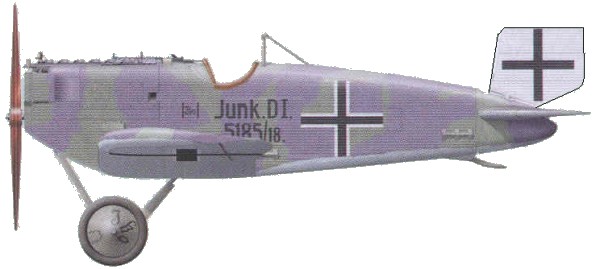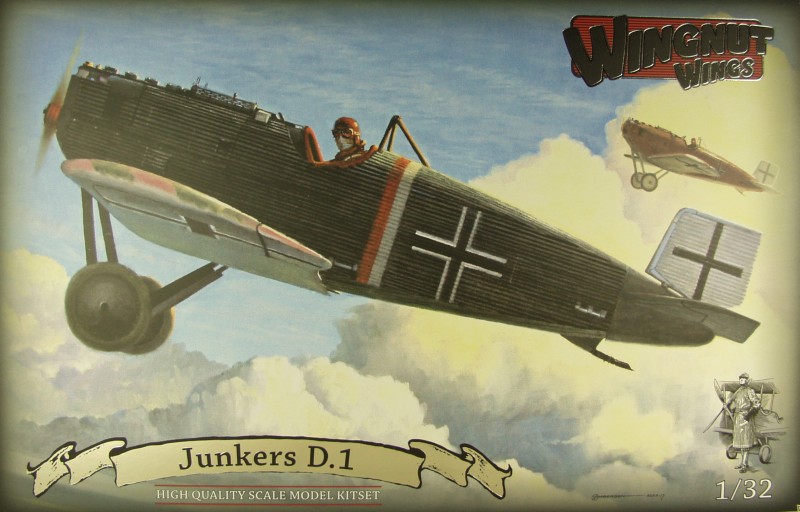Junkers D.I

The
revolutionary Junkers D.1 all metal monoplane fighter entered service
in late 1918 and can trace it's lineage back to Professor Hugo Junkers'
1912 patent for a thick cantilever wing design intended to increase
lift and reduce drag. The history gets complicated due to Junkers using
a J number as an in house design number but when they became viable the
military assigned a different J number. For instance the J.1 described
on another page was Junkers number J 4. What eventually became the D.1
was the end result of a number of prototypes one of which (the J 7) was
demonstrated at the first fighter competition in January 1918. The
speed and performance were excellent but it was felt it lacked
maneuverability and downward visibility. Perhaps understandably the
design was viewed with suspicion by many pilots more accustomed to
traditionally constructed biplanes, a suspicion not really overcome
until well into the 1930s. A further modified prototype but with a
200hp Daimler-Mercedes engine was entered in the second fighter
competition in June 1918. Now called the D.1, at least four of them
were dispatched to the front on 2 October 1918. How much action they
saw before the Armistice is unconfirmed but they were used to great
effect during the fighting between German Freikorps and Bolshevik (and
other) forces in the Baltic during 1919. Only 40 were built, most of
which were delivered after the Armistice.
The Junkers D.1 specifications as follows;
Wingspan 28.5'Length 22'
Max speed 109 mph
Total number built 40 from May 191 to February 1919
Armament consisted of two 7.92mm Spandau machine guns.
The Kit

While most of the kits in the WNW series can be built out of the box to an excellent level of detail there seems to always be some after market items to enhance things. Many of them are for the engines which are small kits in and of themselves but they can be enhanced with wiring, spark plugs and valve springs. I have not given in to any of this yet and probably won't until I start building and find I have the desire to do some enhancement.
Links to kit build or reviews
A quite thorough in box review can be found here.
Back to
the WWI page